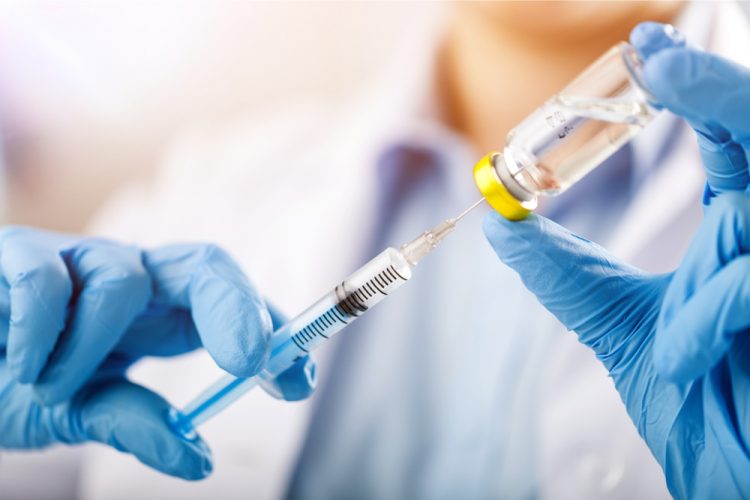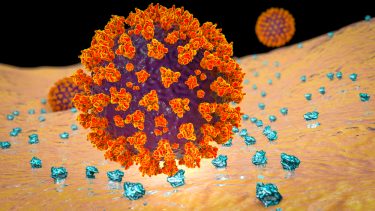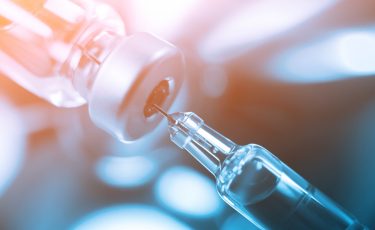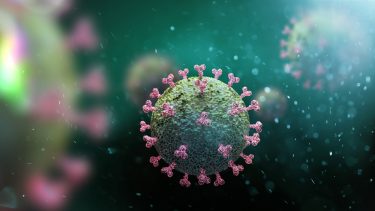Utilising an interleukin-12 plasmid: a novel COVID-19 vaccine
Posted: 13 May 2020 | Victoria Rees (Drug Target Review) | No comments yet
Dr Bernard Fox from Providence Cancer Institute explains how OncoSec’s CORVax12 vaccine works to potentially combat COVID-19.


A novel, DNA-encodable COVID-19 prophylactic vaccine candidate, CORVax12, has been developed by researchers in the US. This candidate combines the use of an interleukin-12 (IL-12) plasmid and a plasmid encoding for the Spike (S) protein from the novel coronavirus. Upon gaining US Food and Drug Administration (FDA) approval, OncoSec’s CORVax12 vaccine will be studied by Providence Cancer Institute in a first-in-human Phase I clinical trial.
Dr Bernard Fox, from Providence Cancer Institute, spoke to Drug Target Review’s Victoria Rees about the new vaccine candidate.
“We are very excited to be working with OncoSec because of their technique of incorporating IL-12 into tumours as a therapy. However, in this case, we are going to use their IL-12 plasmid, which has already been in clinical trials, in an infectious disease setting. We are cross-referencing their plasmid for this study and using new, more effective low voltage electroporation settings to move the DNA into the cells of the body.”
The importance of a COVID-19 vaccine
Fox began by explaining why the need for a COVID-19 vaccine is so significant; no one can say how the human population is going to respond in the long-term to this coronavirus and researchers have seen that humans do not maintain strong immunity with other coronaviruses.


“We already know from most of the other vaccine studies and from patients that have been infected with coronaviruses, that immunity can fall off with time. Although boosters might work, it may be better to figure out if you can induce a stronger memory response initially so that you will need less boosters and it may even provide more protection,” said Fox.
How the CORVax12 vaccine works
The CORVax12 consists of OncoSec’s existing product candidate, TAVO™ (the IL-12 plasmid), in combination with an immunogenic component of the SARS-CoV-2 virus, explained Fox. The SARS-CoV-2 S protein used was recently developed by researchers at the US National Institute of Allergy and Infectious Diseases (NIAID) and licensed to OncoSec on a non-exclusive basis.
The IL-12 vaccine strategy, originally developed by OncoSec to combat cancer, uses electroporation to deliver the IL-12 plasmid directly into tumour cells, which then produce and secrete IL-12 protein into the local microenvironment.
“We know that IL-12 in a cancer vaccine can augment the development of a Type-1 immune response by activating innate cells,” said Fox. “We are hoping to show that we can augment the response that we get with vaccine alone by combining it with the IL-12.”


Fox also said that the researchers have, at present, constructed the plasmid and sequenced it. They have made a master cell bank where the scientists are continuing to select different culture conditions and different branching conditions to obtain a maximal immune response.
Timeline for the vaccine
Touching on the potential timeline to get the vaccine to patients, Fox said “it is going to move much faster than anything else we have seen before.”
Fox hopes that by the end of May, the FDA will grant approval for the vaccine’s Investigational New Drug (IND) application.
“I think we were pushing it pretty quickly to get all the pre-clinical studies completed before we move to clinical trials,” said Fox.
The next steps for development
Fox explained that once the FDA grants approval, the Phase I clinical trial to evaluate the CORVax12 vaccine will begin. The study will consist of two groups; in the first, patients will be injected and electroporated with a plasmid encoding for the stabilised S protein and in the second, patients will be injected and electroporated with both the stabilised S protein plasmid as well as the IL-12 plasmid.


Fox said that if a strong immune response is not seen in patients, then the design of the vaccine may be altered; utilising techniques that cancer immunotherapy researchers have been evaluating for many years to boost weak anti-cancer immune responses. He said that this is likely to be an option big pharma will reluctantly and slowly embrace – instead, smaller biotechs will be the ones to champion this strategy.
The importance of funding
Fox highlighted the importance of funding for projects such as the CORVax12 vaccine. He said that due to the US National Institutes of Health (NIH) cutting funds for the FDA Centers for Disease Control and Prevention (CDC), there is a lack of money and resources available for researchers.
However, the silver lining of the current situation is the charitable actions of others. Fox remarked that the CORVax12 project was moved forward rapidly due to this and he emphasised that philanthropic investment will remain one of the main driving forces behind COVID-19 therapeutic and vaccine development.
“I think from an academic side and small biotech standpoint, we have been very fortunate,” said Fox.
Related topics
Immunology, Research & Development, Targets, Vaccine
Related conditions
Cancer, Coronavirus, Covid-19
Related organisations
FDA Centers for Disease Control and Prevention (CDC), OncoSec, Providence Cancer Institute, US Food and Drug Administration (FDA), US National Institute of Allergy and Infectious Diseases (NIAID), US National Institutes of Health (NIH)
Related people
Dr Bernard Fox








